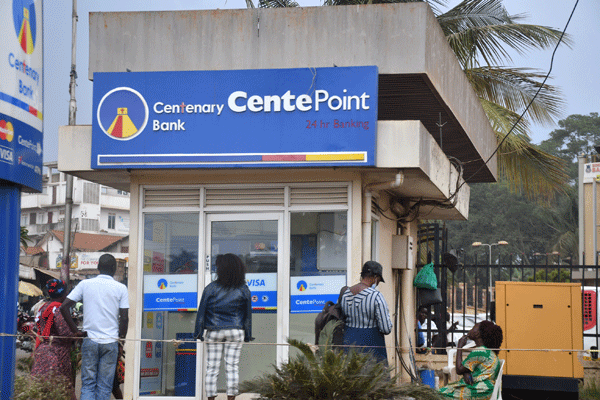Brightening farmers’ incomes with sunflower

Santo Obita looks at his plant killed by root rot and a leaf affected by leaf rust. PHOTOS/George Katongole
What you need to know:
Sunflower is an important cash crop in Lango, Bunyoro, some parts of Teso and West Nile regions mainly for oil extraction. Today, farmers have adopted the high yielding varieties which has in turn helped them to reap the benefits.
Santo Obita is a member of Akemkwene Farmers Group in Alyek village, Otaka Parish Agago District. He is one of the thousands of smallholder sunflower farmers in Uganda. For four years, he has been growing sunflowers on a commercial level after being frustrated by dwindling harvests from ground nuts, maize and cassava.
Obita grows about one and a half hectares of sunflower and harvests nearly 900 kilos of seeds every season. Each harvest earns him about Shs2.8m.
He uses the profits to pay school fees for his children while improving his household living conditions and nutrition. He says there has been an unbelievable change in his life.
“I was living in poverty but now I employ even casual labourers to help me open the land. I am at peace because I am able to meet my daily needs,” he says.
Because of the virgin soils in Agago, Obita does not need to use fertilisers. Previously, he used to buy seeds from hawkers, who ended up cheating him.
“Their seeds were not germinating uniformly. There were a lot of gaps in the garden and I made losses most of the time,” Obita says.
In 2019, Obita was chosen by the Adventist Development and Relief Agency (Adra) as a seed recipient of improved sunflower seed alongside four other members of Akemkwene Farmers Group. They were beneficiaries of a livelihood programme, Social Change and Livelihood Enhancement Programme (SCALE) project.
The project supports smallholder farmers in groups with climate-resilient seed and cassava cuttings.
Adra invests in the potential of individuals through improving the livelihoods, marketing opportunities and incomes of small scale farmers. As a group, they make bulk selling to cooperatives that offer them favourable prices while acting as local seed businesses through seed multiplication.
Why sunflower
Sunflower is an important cash crop in Lango, Bunyoro, some parts of Teso and West Nile regions mainly for oil extraction.
With most people becoming health-conscious, the cholesterol-free sunflower oil is in high demand locally and internationally. The residues after oil extraction, the nutritious sunflower seed cake, form an important ingredient for livestock.
A crop yield of 600kg/acre can provide at least 200 litres of oil. It is a high value commodity where a farmer can reap profits of about Shs680, 000 at a unit cost of Shs5, 000. Inferior varieties rake in about Shs400, 000 per acre in profits if sold as a grain.
According to Marish Andiga, the income generating activities support officer and an agronomist, the SCALE programme sunflower farming as a business is the gateway to poverty alleviation among rural communities in Pader and Agago districts in northern Uganda.
“But before farmers undertake sunflower farming, they need to be aware of the risks involved. The major risks are the changes in yield due to climatic changes, price variations and costs of production,” Andiga says.
Agronomy
Sunflower grows in a wide range of fertile soil types mainly sandy loam to sandy clay.
Areas that receive direct sunlight for about six to eight hours a day, are preferred.
Sunflowers have long tap roots that need to stretch out, so the plants prefer well-dug, loose, well-drained soil. Sunflowers are heavy feeders, so the soil needs to be nutrient-rich with organic matter or compost. In the absence of any of those options, a farmer is encouraged to apply NPK fertiliser.
The best planting time is at the onset of the rains by using a spacing of 75x60cm when planting two seeds per hill or 75x30cm when applying one seed per hill.
It is a good practice to do a germination test before planting.
Improved varieties
Most sunflower seed is supplied by Mukwano Industries, seed companies and the maturity period of about 100-110days.
Sunfola, an open pollinated variety, yields between 240-320kg per acre. It has about 35 per cent oil content, soft and black seed coat though susceptible to head rot and stem rot.
Improved varieties in the PANA series including 7057 and 7033 black, have a better yield averaging 320-500kg per acre with higher oil content.
The latest, Sesun series (1H and 2H) tend to mature early in less than 100 days. It’s reputable for the high oil content up to 43 per cent.
According to Andiga, climate-smart agriculture requires farmers to adopt the high- yielding varieties to reap the benefits.
Other climate smart options include crop rotations which have been proven by scientists to reduce build-up of weeds, pests and diseases. Where farmers do not have enough land to rotate crops, intercropping can be used. Legumes are recommended as rotational crops for their nitrogen-fixing functions. Sunflowers can be intercropped with groundnuts or maize.
Fertiliser especially Single Super Phosphate can be used at recommended rates to boost crop yields.
Weed management
In northern Uganda, most of the peasant farmers use mainly three weed management practices including manually with hoes, using oxen and hand weeding. But large scale commercial production includes the use of motorised hand-driven implements, spraying with herbicides or weeding with a tractor.
“But there is emphasis on using organic means of production and this is why smallholder farmers remain an important element in sunflower production. Since the use of chemicals can increase the costs of production, they use the labour-intensive option for organic production,” Andiga says.
Pest management
Sunflower production is faced with major pests especially birds and squirrels which can cause great losses at harvest.
This is locally managed by regular bird scaring in the field or choosing to plant in the second season.
The most common disease affecting farmers is leaf blight which is mainly seed-borne or is caused by weed hosts.
Leaf blight symptoms include brown patches behind sunflower heads or yellowish patches on the leaf.
This is managed through using the proper spacing, field sanitation practices that include clean cultivation, planting resistant or tolerant varieties, application of manure, crop rotation as well as removal of diseased plants. Sunflower is commonly rotated with soybean, maize or cassava.
Head rot is another common disease. The seed-borne disease also manifests as root rot. It leads to untimely dropping off of leaves and complete death of plants in the garden.
Andiga explains that by using quality seed, the disease can be managed.
But by providing optimum nutrition that maintains plant vigour, irrigation during drought and by proper spacing, head rot can be managed.
Leaf rust disease whose symptoms are small, reddish brown pustules covered with rusty dust on the lower surface of bottom leaves, is another common problem.
Leaf rust thrives in temperatures ranging between 25-30 degrees.
However, it can be managed by planting improved seeds, crop rotation and removal of previous crop residues.
“All diseases that affect the leaf are deadly because plants can hardly make food through photosynthesis. That is why they starve and if they mature, the yield is disappointing,” Andiga explains.
Harvesting
Generally, when the head turns brown on the back, seeds are ready for harvest. This happens about 30-45 days after bloom and seed moisture is about 35 per cent.
The heads are harvested by cutting the head off the plant about four inches below the flower and removing the seeds with fingers or a fork.
The seeds are thereafter stored in airtight containers and kept in a rat-free house. If gunny bags are used, the farmer must ensure that the storage bags are put on racks.
Did you know?
Sunflowers are heliotropic, which means that they turn their flowers to follow the movement of the sun across the sky.




